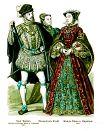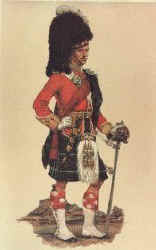|
|
||
| David McIntosh 1867 - about 1935 | David McIntosh 1867 - about 1935 | |
| David McIntosh
was born on the 1st August 1867 in Edinburgh Parish, Edinburgh,
Midlothian, Scotland, the son of a butcher, and the third of five
children. It was probably hoped that he would follow in the
footsteps of his father as, at age 14, he was a Butcher's
Messenger. This was not to be. Sometime between the
ages of 14 and 18 David ran off to join the Seaforth Highlanders (below
age). He was a professional soldier most of his
life. During his service, he was awarded medals from various
battles in the British Empire; namely, Hazara in 1888 & 1891,
the Boer War in South Africa, where he was awarded decorations from the
battles of Wittebergen, Transvaal and Cape Colony.
|
At 39, on the
6th of July 1906, David married Mary Jane Dickson of Glasgow, Scotland
at St Mary's Episcopal Church, in the Kelvin district of
Glasgow. David had left the army for a period of time during
which he met his wife-to-be on a ship from the United Kingdom to
Australia. For some reason they returned to Scotland from
Australia to be married. His occupation when not
enlisted was that of a telegraph linesman.
In the census of 1901 Mary is still living at home at 11 Findley Street, Glasgow, with her father, mother, sister, and brother. Her occupation was that of an Umbrella Coverer. Mary Jane Dickson, born in June of 1875, was 1 of 9 children of Irish immigrants, Thomas Dickson and Rebecca Jane Claughley. Thomas Dickson, who was born in 1836 in Northern Ireland, was a Railway Porter in Glasgow. His wife Rebecca was born in 1838 also in Ireland. Their first son, Thomas McIntosh, was born in 1910. Two years later, on the 20th of June 1912, their second son, David, was born. David and Mary went on further to have two daughters, Rebecca, born 1914, and Elizabeth, born 1916. David rejoined the regiment for the First World War and again was decorated. There is an old story passed on by some of his pals from the British Legion at his funeral in the mid 1930's. They recalled David going into action against the German lines when, having reached their objective, his kilt hung about him in shreds, due to bullets and yet not a scratch did he receive. David survived all these battles only to die on the operating theater in a Glasgow hospital.
|
|
 THE McIntosh FAMILY
THE McIntosh FAMILY